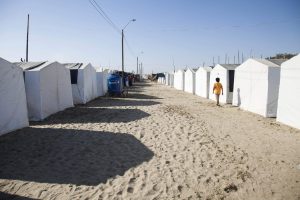Lima, Jul 21 (EFE).- Losing their homes is not the only calamity suffered by the thousands of evacuees from Peru’s current massive flooding, which has forced them to flee into unhealthy campsites where, as if this were the Exodus described in the Bible, they are under siege from dengue, zika, anemia, rats and crickets.
For many inhabitants of Catacaos and others nearby settlements of the northern Piura regon, the only roof over their heads during the last three months has been a 9-square-meter (97-square-foot) plastic tent, a limited space where they try to restart their lives in the blazing-hot desert of northern Peru.
They know they can never go back to where they came from, since the government has banned any more building in the flooded area in order to avoid further catastrophes.

Their only hope is to build a rustic shelter, starting with the tents they were given in San Pablo, Santa Rosa and Tambogrande, the big campsites located along 5 kilometers (3 miles) of the North Panamerican Highway and recognizable from a distance for their mass of white plastic.
At the start of the emergency, some 16,000 people found homes in these improvised shelters, and three months later some 3,000 people are still there, according to officials of the Ministry of the Woman and Vulnerable Populations (MIMP) said, or 10,000 according to the Regional Health Authority (Diresa) of Piura.
These are part of the 93,000 affected by the floods only in Piura on the Ecuadorian border, who also include 18 fatalities, 3 missing persons, 40 injured and 15,000 homes destroyed.
Living in Santa Rosa is Yeni Chiroque, mother of a 7-year-old boy, who told EFE that conditions in the camp are “very hard,” since “the tent is sweltering inside” when it’s hot outside, with temperatures up to 40 C (104 F) in summer, but cold at night in winter.
Fortunately, the army comes by every two weeks with food donations, a service that will continue as long as the state of emergency lasts.
In San Pablo, Ines Moran, a mother of two, told EFE that this camp gives them “the chance to start from zero and go forward,” while observing that some 15 prefabricated houses the government donated two months ago are still uninhabited.
The floods have also caused a dengue epidemic in Piura, with up to 43,000 cases registered since the beginning of the year, about twice as many as in previous years from this endemic disease, according to the Diresa regional director of strategic operations in Piura, Eduardo Alvarez.
A dozen cases of zika have also been registered, three of them being pregnant women, which has led authorities to take special measures to keep those with child from catching the disease, which can cause children to be born microcephalic.
